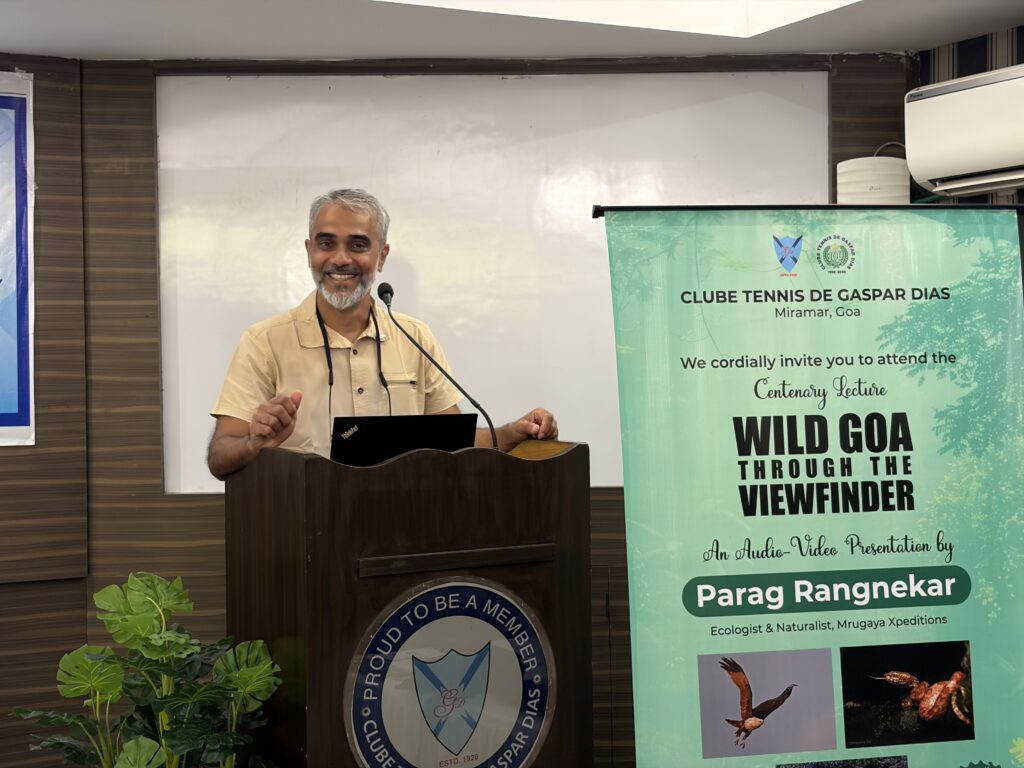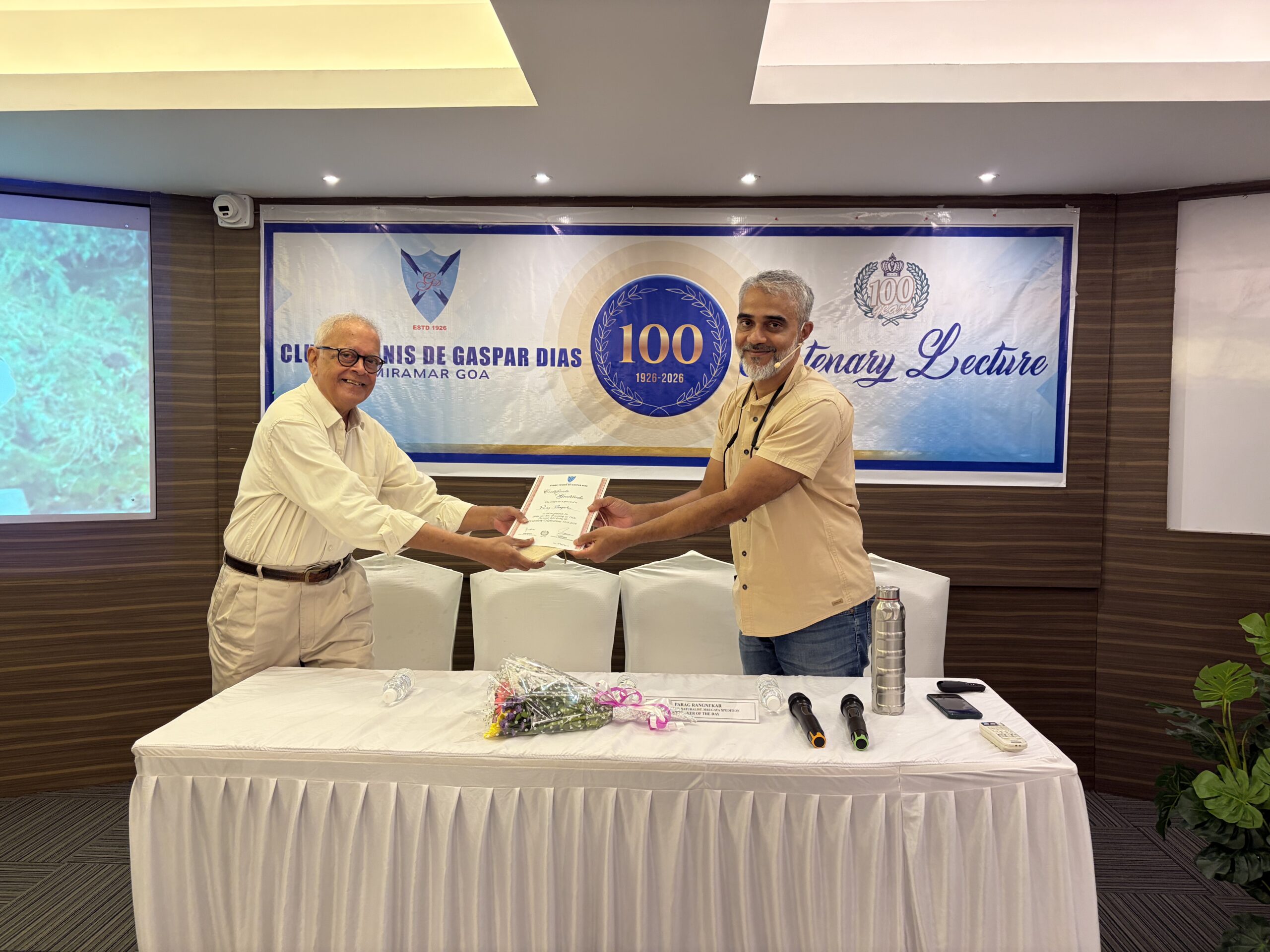
Rangnekar spoke about documenting Goa’s fast-changing ecology through his photographs and urged Goans to respect its unique ecology during the centenary lecture.
Goa’s lateritic plateaus — often dismissed as barren wastelands and rapidly being flattened for industrial estates, housing projects and airports — are, in fact, living ecosystems, according to ecologist and naturalist Parag Rangnekar, who also said that beneath their rust-red crusts thrive species found nowhere else, from hardy grasses and insects to birds that link the state’s northern and southern ecological zones.
“They are misunderstood landscapes,” said Rangnekar, founder of Mrugaya Xpeditions, speaking at a lecture ‘Wild Goa Through the Viewfinder’ at Clube Tennis de Gaspar Dias, as part of the club’s centenary celebrations. “Goa is unique because it sits in the transition zone of the Western Ghats — with species from both north and south,” he noted.
With an extensive collection of photographs, Rangnekar touched upon several topics like rare species, climate change and the fast-changing ecology of the state. Citing one such example, he showed the audience pictures of several endemic birds, noting that their sightings have declined over the years. “It’s very interesting that the sighting frequency has gone down and we have absolutely no idea why that’s happening. These birds have the perfect habitat, a good forest, but there’s a downward trend, and we need to explore, we need to understand why. Interestingly, the Indian grey hornbill’s sighting frequency has gone up and it’s a dry land species. And so, we can draw some inference that probably certain parts of Goa are facing a climate change issue. Is it getting drier in some parts? We need to ask this question and find answers,” he explained.
Through the presentation of his photographs, Rangnekar provided some tips on photography and showcased how he has been documenting, over the past couple of decades, some rare species and the fast-changing ecology of Goa.
“I think photography and visual storytelling have a lot of power, and it needs to be harnessed; pictures can say much more than words can. I’m not a wildlife photographer, I just photograph wildlife for the objective of documentation, research and then try to put them to good use through education,” he said.
In an interesting anecdote, Rangnekar shared how he and his team unwittingly discovered a new species of dragonfly. “Once on our way to Bengaluru in 2008, when walking on the railway line was allowed, we decided to make a trail around the railway track, and I photographed this dragonfly. Only when I got back and looked at it more closely, I realised that this is something different. It did not match anything that was described earlier. We went back, looked for it, and we found more specimens and collected them; this turned out to be a new species to science,” he said.
“I’m just trying to impress upon you how photography can be used to document things. It took us five years to locate the specimen and officially publish it in 2013 as Idionyx gomantakensis,” Rangnekar added.
Rangnekar also commented on his unique photograph of a spider feeding on a bat, which he said was perhaps the only photograph in the world of a spider feeding on a mammal. “There are several records of this spider called the giant bull spider; it makes these huge webs and there are records of it feeding on birds, but this is the one and only record of the spider feeding on a bat,” he said.
Even chance encounters, when photographed, can help document and aid research, he said.
“This was taken at my native place, I’m just outside our door, in the early morning, with a toothbrush in my mouth and I saw this. I took the camera out, took a couple of pictures, and then read up more and found research on it, and realised that this has not been observed before anywhere. This is how photography can really be useful,” Rangnekar stated.


